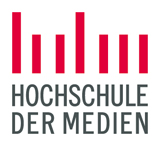| Zuletzt geändert: | 12.12.2024 / Özkan |
| EDV-Nr: | 119651a |
| Studiengänge: |
Mobile Medien (Bachelor, 7 Semester), Prüfungsleistung im Modul Mixed Reality Design
in Semester
4 6 7
Häufigkeit: S25
|
|
Dozent:
|
Prof. Dr. Sabiha Ghellal
|
|
Sprache:
|
Deutsch
|
|
Art:
|
-
|
|
Umfang:
|
4 SWS
|
|
ECTS-Punkte:
|
6
|
|
Workload:
|
Total hours: 180
Contact hours: 60
Self-study: 120
|
|
Inhaltliche Verbindung zu anderen Lehrveranstaltungen im Modul:
|
As this course is part of the English-language Minors program in collaboration with the Audiovisual Media program, students are required to apply for participation. An application form will be provided in advance. This course also includes a three-day excursion with a minimal participation fee. It is recommended to take this course concurrently with the following courses from the Audiovisual Media program to maximize learning outcomes.
|
|
Prüfungsform:
|
|
|
Beschreibung:
|
(20-23) Excursion to Nonnenhorn Students will begin the module by engaging in “Body Storming,” an interactive exercise designed to explore the spatial qualities of a physical environment. This workshop emphasizes the importance of understanding how physical space affects design decisions and the emotional experience of users. The goal is to establish a foundational understanding of spatial perception through direct interaction.
(April 7th) Experimental Prototyping in VR Concept and Layout Development
Using lightweight VR devices such as the Meta Quest 3, students will sketch initial concepts in a virtual environment. This phase introduces state-of-the-art 3D sketching tools, enabling participants to experiment with mixed reality space configurations and user interactions. The focus will be on creating low-fidelity prototypes to test spatial relationships, lighting, and user flow.
: Projection Mapping Workshop
Students will learn to project their digital designs onto real-world objects and spaces, creating interactive mixed reality environments without the need for VR headsets. This workshop will introduce the basics of projection mapping and its applications in architectural design and spatial storytelling, allowing students to blend digital content with physical settings dynamically.
Final Production and Evaluation
The final phase involves a synthesis of the various experimental sketches and prototypes into a cohesive mixed reality experience. Students will evaluate each design approach and select elements that best convey their narrative or spatial concept. The completed project will be presented as a photorealistic VR experience, supplemented by projection mapping elements, resulting in a hybrid physical-digital environment.
Final Presentations (June 23)
|
|
English Abstract:
|
This course is part of the English-language Minors program in Experimental Film & Mixed Reality, offered in collaboration with the Audiovisual Media program. Due to its interdisciplinary nature and the inclusion of a three-day excursion, limited spots are available for each study path. Interested students are required to apply. Information and the application link will be sent via email at the end of February.
The course kick-off, including details about the excursion, will take place on March 17 at 17:00 in Room 148. A highlight of this course is the three-day excursion from March 20 to March 23, which requires a minimal participation fee.
To enhance the learning experience, we recommend concurrently enrolling in the following complementary courses from the Audiovisual Media and Mobile Media programs:
Audiovisual Media:
Creativity and Media (EDV: 221143)
Screen Design (Motion Graphics in After Effects) (EDV: 221201)
Mobile Media:
3D Experience Design (EDV: 119652)
CONTENT: The module “Mixed Reality Design” explores the intersection of physical and virtual spaces through a series of workshops and practical experiments. Students will investigate how immersive technologies such as virtual reality (VR), 360-degree video, and projection mapping can be used to create engaging mixed-reality environments. Through hands-on exercises, students will learn to design, sketch, and prototype mixed reality experiences, culminating in a final project that integrates various design approaches and technical solutions.
|
|
Literatur:
|
Benford, S., & Giannachi, G. (2011). Performing mixed reality. MIT press.
Billinghurst, M., Clark, A., & Lee, G. (2015). A Survey of Augmented Reality. Foundations and Trends in Human-Computer Interaction, 8(2-3), 73-272.
Flavián, C., Ibáñez-Sánchez, S., & Orús, C. (2019). The Impact of Virtual, Augmented and Mixed Reality Technologies on the Customer Experience. Journal of Business Research, 100, 547-560.
McDowell, S. (2020). Projection Mapping: Theory and Application. CRC Press.
Milgram, Paul; H. Takemura; A. Utsumi; F. Kishino (1994) “Augmented Reality: As class of display on the reality-virutality continiuum” Proceedings of SPIE - The International Society for Optical Engineering Vol. 2351. Retrieved 2021-06-01
Weitere Literatur finden Sie in der HdM-Bibliothek.
|
|
Internet:
|
Mixed Reality Toolkit: https://microsoft.github.io/MixedRealityToolkit-Unity
Zoe App https://zoeimmersive.com/app/
VR Sketching in Meta Quest: https://vrsketch.io
Projection Mapping Guide: https://projection-mapping.org
Die Geschichte der (AR) Augmented Reality und ihre Zukunft
|
